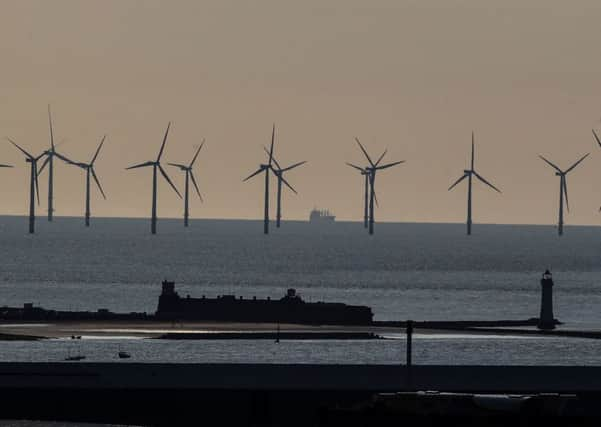Gina Hanrahan: Offshore wind energy is set fair in UK


This is good news for the renewables industry, for consumers and for our rapidly warming climate. It comes on the back of a big milestone for Beatrice windfarm in the Moray Firth, which just last week produced its first power, on track to powering nearly half a million homes from 2019.
The vote of confidence in the sector is richly deserved. Offshore wind is proving its worth, driving down costs at phenomenal pace.
Advertisement
Hide AdAdvertisement
Hide AdIn the latest 2017 auctions for clean power, the cost of offshore wind farms fell by around 60 per cent compared to the cost of turbines going into the water today, with benefits to household bills.
The sector can now plan ahead, drive further supply chain growth and continue to push the boundaries of innovation, including in floating wind technology.
The foresight offshore wind now enjoys shows the way forward for other renewable technologies like onshore wind and solar.
They are currently locked out of the market but should be allowed to compete on a level playing field.
Polling has repeatedly shown that they are popular with the public, with new figures just last week revealing that two-thirds of voters support overturning the effective ban on onshore wind – a clear majority across every major political party. This would be a huge boon to Scotland, with our windy weather.
Access to competitive auctions for island wind in Scotland is welcome, but so much more clean, cheap power can and should be delivered if we’re to tackle climate change in a cost-effective way. And a mix of renewable technologies, alongside increased support for flexibility, storage and reducing demand, is critical to a resilient electricity system.
Onshore wind and solar are likely to be 25 per cent cheaper compared to new gas, according to the UK and Scottish Government’s statutory advisors, the Committee on Climate Change.
That’s why they advised in their recent UK Government report card to support the simple, low-cost options and to stop chopping and changing policy. There are clear signs this is happening with offshore wind; that clarity now needs to be extended more widely.
Gina Hanrahan is acting head of policy at WWF Scotland
